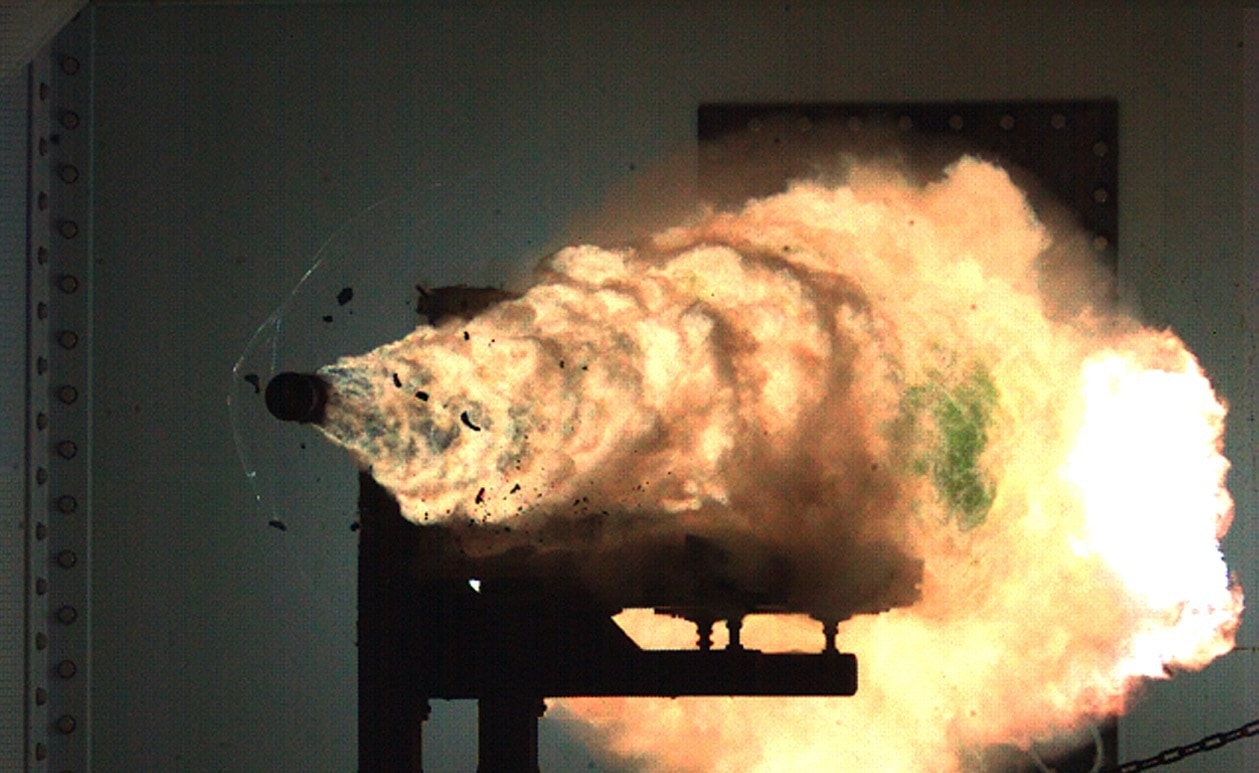Reports of the end of the Electromagnetic Rail Gun were premature, as well as EMP defense technologies. It was previously reported, “EMP: The Biggest Military Threat America Faces Today?” where the alarm was sounded about how the Biden Administration was dropping the ball on protecting America’s national grid infrastructure against electromagnetic pulse (EMP) strike. This is especially disconcerting in light of the fact that Iran, Russia, and China alike all have EMP strikes against the United States included in their war plans.
Nine months later, I’ve seen no evidence that President Joe Biden has shown any renewed willingness to carry on his Oval Office predecessor’s Executive Order 13865, which outlined a comprehensive EMP protection plan. The mind fairly boggles at the White House’s lack of sense of urgency.
However, as depressing as it is to see the U.S. continue to lag behind in passive EMP defense, there is at least a glimmer of hope that the nation is going to revive its proactive EMP warfighting capabilities, in the form of the railgun.
Part I: The Railgun Concept Explained
In essence, a railgun is a weapons system that uses electricity flowing between two parallel conductors to shoot a non-explosive projectile at high speeds over great distances. The sheer velocity alone – up to Mach 7 in some instances – results in such a powerful kinetic impact, that explosives are unnecessary.
Part Deux: The Railgun is Killed
Sounds great in theory. However, in practice, the railgun had enough teething issues that the U.S. Navy decided to shelve the program back in 2021. In July of that year, Associated Press reporter David Sharp, in an article published in Defense News, noted that amongst the problems that arose during the Navy’s tests: “A Navy vessel could not employ the gun without putting itself within range of a barrage of enemy missiles … A normal gun can be fired about 600 times before the barrel must be refurbished, but the barrel on the railgun prototype had to be replaced after about a dozen or two dozen shots were fired.”
Indeed, 19FortyFive reported “Railguns: The Ultimate Weapon The U.S. Navy Can’t Ever Build?” Which seems like additional proof that the concept was indeed dead and buried, right?
Part Trois: The Railgun is Resurrected
It appears that the railgun may indeed be undergoing its metaphorical resurrection from burial at sea. This week Newsweek reported on the topic: “US Navy Demonstrates Electromagnetic Railgun,” accompanied by the brief caption “Using an electrical pulse, the railgun can fire projectiles over 100 miles away.” There is no audio accompanying the 13-second video, ergo no elaboration on when and where this test took place or just how serious the Navy is about reviving the program. Nonetheless, it’s an impressive visual spectacle seeing the hydraulics of the gun as it prepares to fire as well as the muzzle flash and smoke plume from the actual discharge of the round.
The most recent and at least somewhat relevant source of additional information comes from an Asia Times article published this week titled “Japan’s railgun ready to fire at China’s hypersonic threat” and authored by Gabriel Honrada. To wit:
“Japan has successfully tested a medium-caliber maritime electromagnetic railgun via an offshore platform, signaling the potential for a high-tech transformation of Tokyo’s defensive posture, according to a Warzone report … Japan’s Acquisition Technology & Logistics Agency (ATLA), part of the country’s Ministry of Defense (MOD), teamed up with the Japanese Maritime Self-Defense Force (JMSDF) for the test.”
In April, Stew Magnuson of National Defense noted that the MOD was looking into a partnership with the U.S. on a railgun program that could be used to counter hypersonic weapons, with a sense of urgency driven by China’s and North Korea’s ever-increasing military modernization and concurrent belligerence:
“Shigenori Mishima, vice commissioner and chief technology officer at the Japanese Ministry of Defense’s Acquisition, Technology and Logistics Agency, listed a railgun as one of the military’s top research and development priorities at the DSEI Japan conference recently … There is a possibility that U.S. defense contractors could join the program, he said in an interview … ’If we can demonstrate the railgun, the United States might change its mind on the technology,’ he said. It would be a win-win for everybody, he said … The two U.S. contractors [BAE Systems and General Atomics] who most recently worked on railgun technology acknowledged that they had been contacted by the Japanese Ministry of Defense.”
Regarding the Chinese menace, it should come as no surprise that in addition to its aforementioned abilities to wage EMP warfare against the U.S. and her allies via nuclear ICBM strike, Beijing is also developing its own EMP railgun technology. In September 2023, Defense Post reporter Joe Saballa, in turn pulling a report from the South China Morning Post, reported that the People’s Liberation Army (PLA) Navy claimed to have developed a so-called “Gauss gun” that could fire a 124-kilogram (273-pound) projectile at a speed of 700 kilometers (435 miles) per hour in less than 0.05 seconds.
Fingers crossed that the U.S. and/or Japan can indeed keep pace.
Christian D. Orr is a former Air Force Security Forces officer, Federal law enforcement officer, and private military contractor (with assignments worked in Iraq, the United Arab Emirates, Kosovo, Japan, Germany, and the Pentagon). Chris holds a B.A. in International Relations from the University of Southern California (USC) and an M.A. in Intelligence Studies (concentration in Terrorism Studies) from American Military University (AMU). He has also been published in The Daily Torch and The Journal of Intelligence and Cyber Security. Last but not least, he is a Companion of the Order of the Naval Order of the United States (NOUS).
From the Vault

